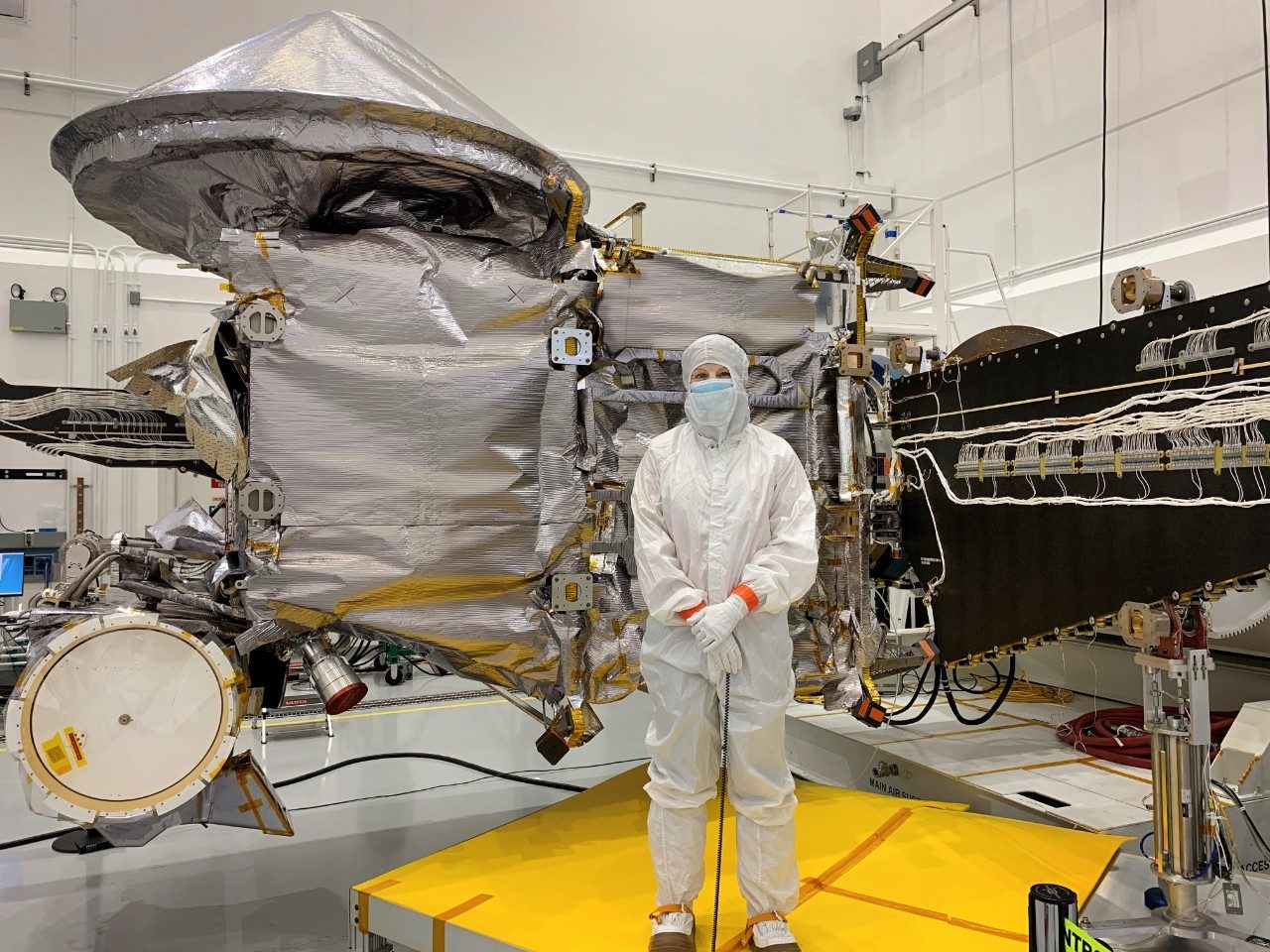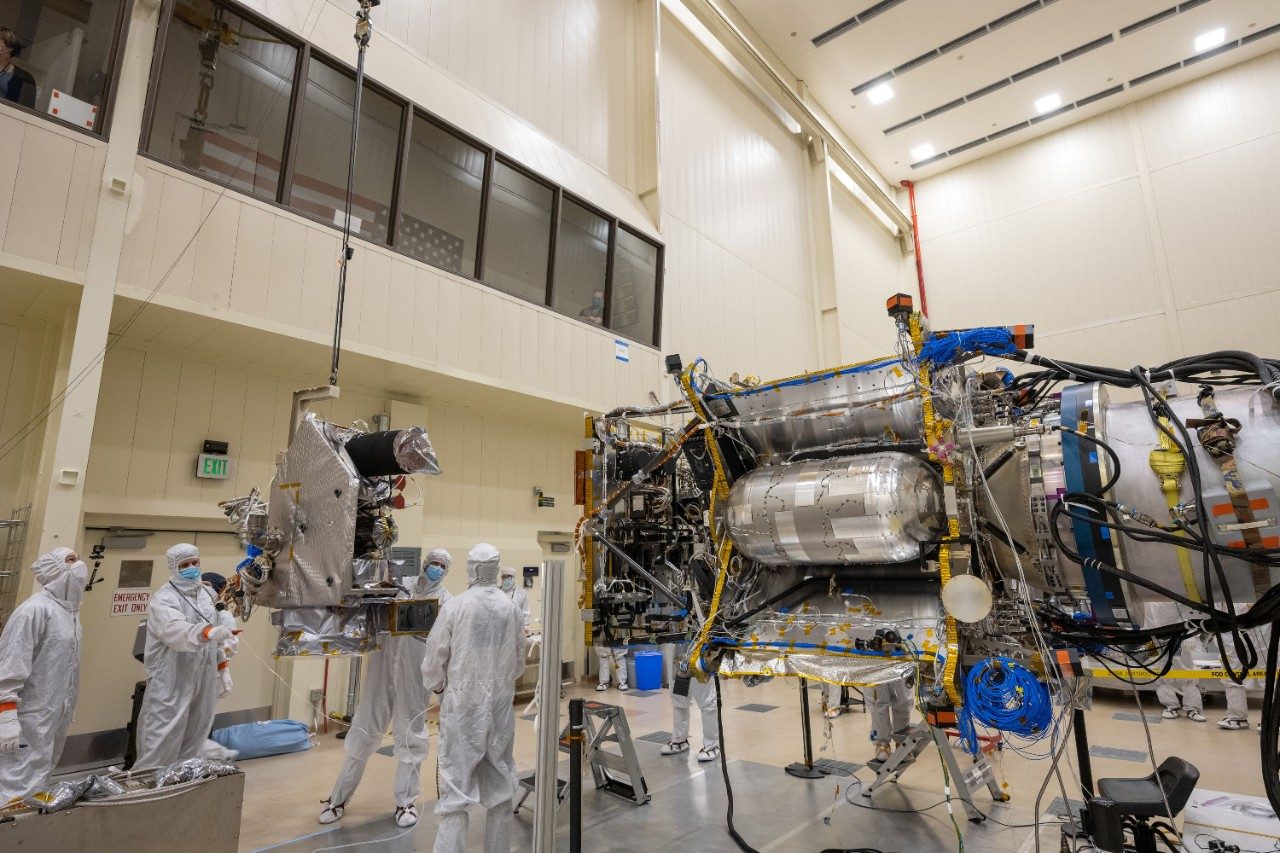Lucy’s mission to visit eight asteroids over 12 years is quickly approaching. The spacecraft, built at Lockheed Martin in Littleton, Colorado, launches this October on a journey to study Jupiter’s Trojan asteroids, which lead and trail the gas giant over 450 million miles from Earth. These asteroids are time capsules of the early solar system and may hold clues that tell us more about its formation.
While the spacecraft’s purpose and flight path are something to behold, the development and manufacturing of Lucy was no small feat, either.
Katie Oakman, structures and mechanisms lead for Lucy, is one of the many extraordinary women who had an impact on the development of the one-of-a-kind spacecraft. “We’re faced with different challenges and obstacles to overcome to be able to put a spacecraft in space, and it’s such a rush to be presented with a problem and collaborate with others to come up with a solution that works,” Katie says of what it means to be an engineer on Lucy.

Spreading Its Wings
Part of Katie’s responsibilities with Lucy were developing solutions for the spacecraft’s gigantic solar wings. “That design was rather large with literally thousands of different, little mechanisms that are put together to make the solar array wings,” Katie says. “Because of the complexity of the solar arrays, there were challenges to come up with a design that could meet the demands both for capability of power and surviving the harsh environments that it’s exposed to.”
To assess these stresses, Lucy underwent testing in a controlled environment here on Earth. Katie and the engineering team developed hardware that simulated zero-g to ensure that the spacecraft could withstand launch, solar array deployment and the harsh environment of deep space. With a wingspan of almost 24 feet and a weight of 170 pounds each, a precision weight offload device needed to be developed as the spacecraft would not be able to support that load in a one-g environment.

It Takes a Team

One of the most important aspects of the Lucy project was the value of teamwork and collaboration as the spacecraft came together over the past four-plus years. Katie’s team of Lockheed Martin engineers worked alongside scientists and program managers from Southwest Research Institution (SwRI) and NASA as they prepped Lucy for its unique adventure. A single person cannot build and launch a spacecraft like Lucy. “But if I do my one little part, and all of the scientists, engineers and planners do their parts to work toward building the spacecraft, then we have the ability to send a spacecraft to the Trojan asteroids and teach us about the origins of our solar system,” Katie notes.
For those looking to begin a career in engineering and space, Katie has a bit of advice. “Enjoy and take all the math and science classes that you can and once you get to college, you can specialize in whichever field of engineering that you might enjoy.”
With Lucy’s mission duration of 12+ years, perhaps you, too, could become a part of the team and support this once-in-a-lifetime mission.
Lucy successfully launched on Oct. 16, 2021. Click here to learn more about other Women of Lucy.




